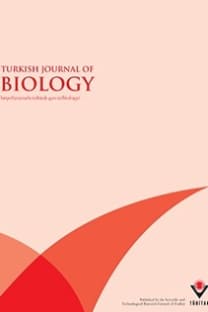A New Molecular Technique for the Identification of Micro-organisms in Biological Treatment Plants: Fluorescent In Situ Hybridization
Wastewater treatment has gained increased importance worldwide due to increasing demand on fresh clean water supplies. Biological treatment achieved by the activities of micro-organisms, is one of the most widely used processes in the treatment of wastewater. High numbers and activities of some groups of micro-organisms are required to treat wastewater in biological processes. In contrast, some groups of micro-organisms must be absent from the system since their presence and activities cause problems in the treatment of wastewater. The structure and function of micro-organisms in wastewater treatment plants (WWTP) have been investigated for decades. However, the identification of both the structure and function of these complex microbial communities is very limited with classical methods. Recently, it has become possible to identify micro-organisms with fluorescent in situ hybridization (FISH) in a cultivation-independent way. In this paper, how FISH is applied and the advantages and disadvantages of this method are considered. In addition, recent studies of FISH for characterizing micro-organisms in WWTP are discussed.
Anahtar Kelimeler:
Wastewater, in situ hybridization, molecular method, microbial ecology
A New Molecular Technique for the Identification of Micro-organisms in Biological Treatment Plants: Fluorescent In Situ Hybridization
Wastewater treatment has gained increased importance worldwide due to increasing demand on fresh clean water supplies. Biological treatment achieved by the activities of micro-organisms, is one of the most widely used processes in the treatment of wastewater. High numbers and activities of some groups of micro-organisms are required to treat wastewater in biological processes. In contrast, some groups of micro-organisms must be absent from the system since their presence and activities cause problems in the treatment of wastewater. The structure and function of micro-organisms in wastewater treatment plants (WWTP) have been investigated for decades. However, the identification of both the structure and function of these complex microbial communities is very limited with classical methods. Recently, it has become possible to identify micro-organisms with fluorescent in situ hybridization (FISH) in a cultivation-independent way. In this paper, how FISH is applied and the advantages and disadvantages of this method are considered. In addition, recent studies of FISH for characterizing micro-organisms in WWTP are discussed.
Keywords:
Wastewater, in situ hybridization, molecular method, microbial ecology,
- ISSN: 1300-0152
- Yayın Aralığı: Yılda 6 Sayı
- Yayıncı: TÜBİTAK
Sayıdaki Diğer Makaleler
Effects of Subchronic Treatment of Some Plant Growth Regulators on Serum Enzyme Levels in Rats
Use of ram horn hydrolysate as peptone for bacterial grrowth
Ömer Faruk ALGUR, Esabi Başaran KURBANOĞLU
Use of Ram Horn Hydrolysate as Peptone for Bacterial Growth
Esabi Başaran KURBANOĞLU, Ömer Faruk ALGUR
Khaled KHLEIFAT, Jumah SHAKHANBEH, Khaled TARAWNEH
Effect of Some Biocides on Glutathione-s-transferase in Barley, Wheat, Lentil and Chickpea Plants
Gülseren COŞKUN, Figen ZİHNİOĞLU
Effects of pH and Aluminium Ion Concentration on Spore Germination and Growth of Some Soil Fungi
The Effects of Heavy Metals on Pollen Germination and Pollen Tube Length in the Tobacco Plant
